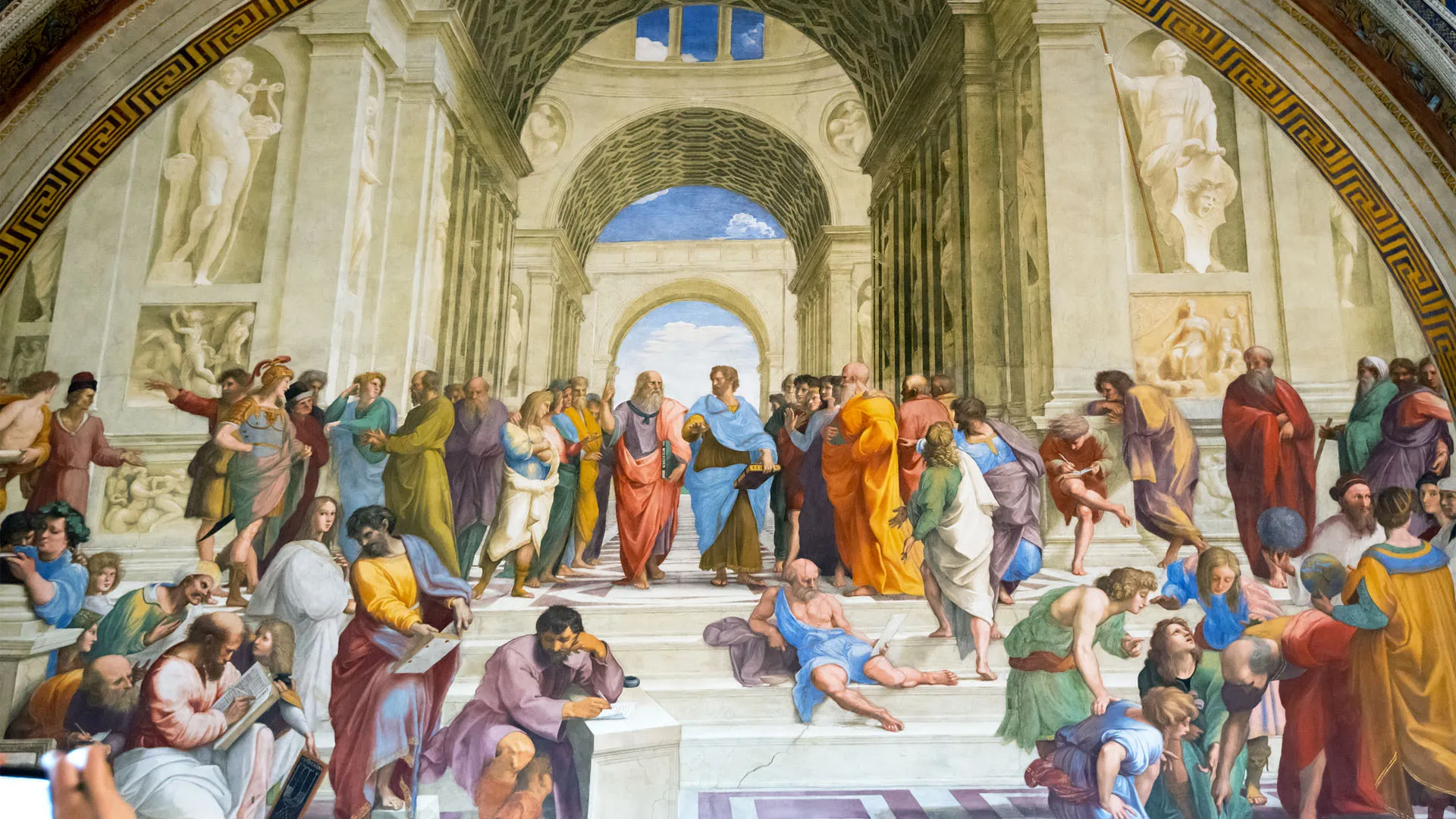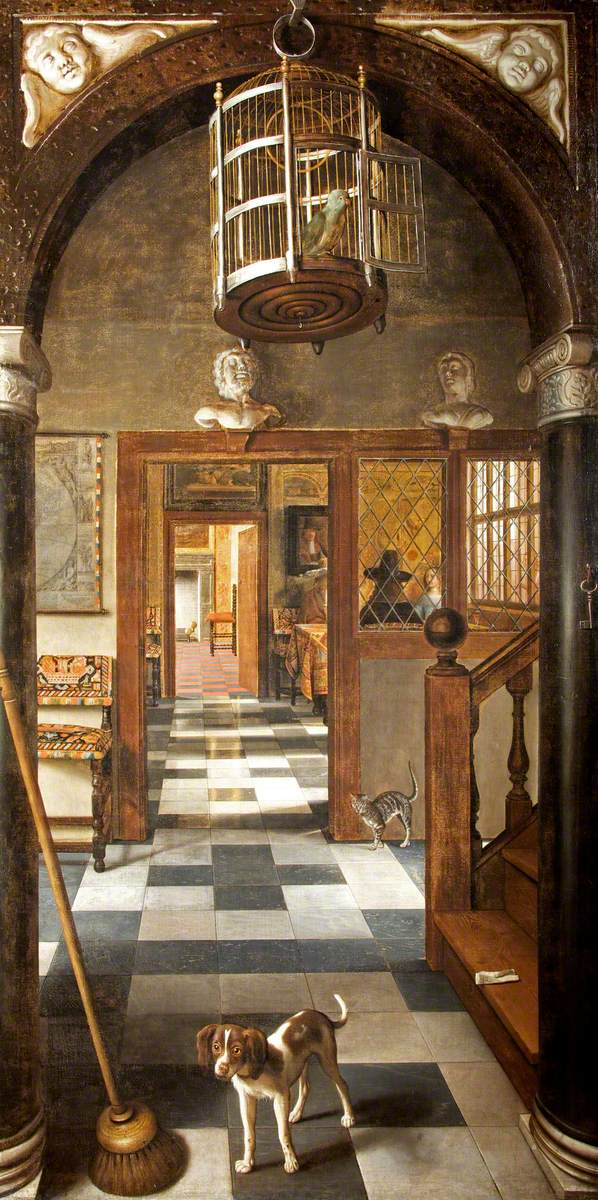created 2025-04-27, & modified, =this.modified
tags:y2025virtualvirtual-spacesaesthetics
Why I’m Reading
Interviewed on a Digital Humanities podcast. A web search displayed some images, the neon wireframe vision of futures past. I connected that path to this book.
The Virtual Turn
The virtual turn is our various communication systems being virtualized (virtual friends, politics, social media.)
Pictorial realism was a significant issue in the aesthetics of the 20th century. Linear perspective, developed in Florence in the 15th century.
In VR we occupy the same space as the objects or events we perceive.
What is a Virtual Reality Medium
Heim’s definition of VR as: “an immerse interactive system based on computable information. (1998)” Chalmers: “a virtual reality environment is an immersive, interactive system based on computer information.”
key states are slippery, “immersive”, “interactive”, “computable”
What is a Medium?
- an intervening substance through which things traverse, or are conveyed
- a physical means of performing some action or achieving some end
From Latin, medius, meaning middle or moderate.
What is Virtuality?
Dictionary sense, ”as if but not strictly so.” or “not physically existing as such but made by software to appear to do so.”
Chomsky notes, “there is a kind of fundamental conformity, which is a ‘virtual’ requirement to enter into the media.” There is no real contract to conform, but for practical purposes there might as well be.
We cannot fully extend computational with virtual. Some computer media is non-virtual; and some virtual media is non-computational.
Virtuality does not mean unreal and the contrast with the real is unfortunate. Virtual items – virtual stores, currency, and memory – are simply real and not unreal, fictional, imaginary or merely conceptual.
A feature of virtualization:
if something is lost, what is lost is often a gain.
Features associated with the material form of an item or activity may not survive its remediation into a new material form, but this is often precisely the motivation for the act of remediation.
Virtual Remediation of Spatial Experience
Depiction of Space
The modern media device associated with VR is the stereoscopic headset.
High Renaissance paintings like Raphael’s School of Athens (1509-1511), the spatiality and arrangement in depictive space were principal aims and central to artistic achievement.
 The viewer is in the action of the scene depicted, with foreshortening on Plato’s arm, a gesture out of the painted surface.
The viewer is in the action of the scene depicted, with foreshortening on Plato’s arm, a gesture out of the painted surface.
- Overlay - figures overlap one another
- Sizing - variation in subject scale
Leon Battista Alberti would go beyond these experiments in his codification of linear perspective in the treatise De Pictura.
Alberti designed a system of perspective—a perspectiva artificialis—that treated painting in terms of an imaginary “picture plane” suspended between the viewer and the depicted scene and allowing for the organization of perceptual space by charting the geometry of light rays. This plane acts as the base of a tilted pyramid, where the peak of the pyramid extending away from the viewer represents the vanishing point of light rays. Employing a horizon line that runs through the vanishing point and orthogonal lines that run perpendicular to the picture plane, the bottom side of the tilted pyramid can be depicted as a foreshortened tiled floor.
These advancements in perspective allowed the impression of looking into the picture’s world. Linear perspective gives the impression that the viewer stands not just before the picture, but before the scene pictured.
These remain flat to experience. Strictly linear perspective has flaws in contrast to naturalistic depiction, or a limitation of an actual spatial experience.
Samuel van Hoogstraten’s 1662 painting, A View Through a House - trompe l’oeil effect allows for the feeling of presence.
 Science and Technology have always influenced pictorial media, and in the 19th century advances led to the development of photography and other forms of image production.
Science and Technology have always influenced pictorial media, and in the 19th century advances led to the development of photography and other forms of image production.
Erwin Panofsky (1947): Development of moving pictures and animation adds a great deal to the depiction of space because the movement of configurations on a 2D pictorial plane allows for dynamization of space.
3D space can use and a place a virtual camera. The movement can augment the sense of spatiality in the depicted scene. Compared to static pictorial spaces, one can move into the environment.
Haptics, and binaural audio (3D, immersive audio) convey information.
VR as a Picturing Medium
In VR the user takes an apparent position within the depictive space (egocentric picturing).
Thought
There are also gameplay experiences where you’ll control an avatar, but view that avatar from another body (such as imagining a scene where you a “small” figure who is running, but you are viewed from the eyes of a Godzilla kaiju stomping around a city.)
What is the space of these second person or multiplicatively disembodied VR experiences? Like if you were a spirit, passing through different objects - a tree, a fence post, a front door, whilst controlling a human.
Game Theorist Rune Klevjar denies that VR representations can be adequately described in terms of theories of picturing, thinking them instead to be more akin to models such as dolls. Games appear to be comparable to Lego sets, architectural models, or theme parks – none of which we think as pictorial phenomena.
They are like dolls “because he denies that the content of pictures can bear a spatial relationship with its viewers, whereas dolls ‘because they represent themselves as physical objects in space […] are ontologically different from images, which appear projected onto a surface.”
Author: Given prominent artifactuality – there’s doubt VR media could give rise to complete illusionism.
Do users of VR see the screen?
ultimately, it is this surface that encodes the visual information that allows for the perception of the scenes depicted in VR. Never in my experience of VR, was I not also aware that I was viewing images on a screen, and indeed that the features of this screen were perfectly evident if I attended to them.
Thought
Clearly the users see the screen because they are responding to it accurately. I began a rebuttal here, but it seems this is all intentional as I carry on reading.
I can fall into a VR experience sensory “trap” if I am invested. People playing PacMan in an arcade, a simply display will get wrapped up emotionally in the mechanics and for moments, necessarily forget about the world around them. Distracted, the game is played in the head.
Because of this I can praise small defects because I am less scared then of being locked in. For example, my primitive and easily fooled mind (aka. immersive), I would prefer such a thing like dust on the VR screen, or fragments of the real world which ensure that I have not completely immersed myself in a virtual space.
If I were to imagine a world farther on, with advanced technology where the VR headset was semi-indistinguishable (without deep scrutiny) from not wearing a headset, I’d want my way out, even if it were an eyelash on the display. In seeing that I would ground myself.
The notion of seeing is ambiguous between sensation, perception and attention.
Not only does perception involve sensory information, but it draws on memory, expectation, and attention. In vision, information of various forms, transduced from the eyes, and including the position, intensity, and color of light in the visual field, is selected and interpreted to build up a visual scene, including, importantly for our discussion here, a spatial interpretation of the environment being viewed.
Contrary Points
- Users do not see a screen but experience an encompassing visual field (Travinor 2019a)
- A prerequisite of immersion is to believe there is some kind of alternative place where in which we can immerse ourselves or be present (as opposed to a simple picture of an animation we can look at from the outside.)
- Author keeps depicting limitations in hardware (limited FOV, letterboxing etc) as things that pull the user out of the illusory virtual world.
- “one of the primary goals of VR is to do away with the screen, or at least the sense of the screen as a mediating interface, altogether”
Accommodation/Vergence Decoupling
In ordinary experience, accommodation (focus) and convergence (eyes pointed) operate in concert – but in VR they decouple due to first focusing on the screen, and then the object in apparent space.
This has effects on the user of visual fatigue, headaches, blurred vision, focus rivalry (conflict between focusing on real world and virtual object in AR both simultaneously)
Surface-less VR
A brain link, like Neuralink – in being not stereoscopic but a direct feed of information is not viewed as an objection because the author views these as hallucinations, and not media.
VR feels more real than traditional screen based games, for example player embodiment in Richie’s Plank Experience where the player is exposed to virtual heights. But there are reasons to be skeptical of this future point of perfectly realistic VR.
- there’s screen door effect, limited fov, lack of peripheral vision, vr sickness, physical weight of headset and tethering, room scale constraints, no smell, taste or feelings of warmth.
Thought
How would you simulate these things, for example warmth, in a painting – in a way that you could not get in VR?
I like this idea, a trompe l’oeil or otherwise regular perspective picture that gives off heat or a breeze. Like if I were in a cold room, but standing by the picture I’d be warmed, or even comforted.
I could also see it like a heavenly gate, or sunny scene (a lone ray) that is also warm. A painting that you can touch.
I want that feeling, like standing before something that is warm. A summer day.
Maybe a two sided mirror, where the painting can be viewed on both sides and there’s some connection to the person on the other side, like their hand deforms the painting like a stretched canvas, or one of those classic pin hand art toys.
Or a book that does this.
Scratch and sniff of warmth.
VR and Ontology
Experience Machine thought experiment (Nozick 1974):
Suppose there were an experience machine that would give you any experience that you desired. Superduper neuropsychologists could stimulate your brain so that you would think and feel you were writing a great novel, or making a friend, or reading an interesting book. All the time you would be floating in a tank, with electrodes attached to your brain… Of course, while in the tank you won’t know that you’re there; you’ll think it’s all actually happening.
Continuum of VR
- left (near physical reality) – users remain present in their physical environment and are never made to believe they’ve left it
- middle (fully mixed) blending of the real world and the digital world
- right (near digital reality) – users experience a digital environment and are aware of what occurs in the physical environment around them.
Social Reality
A way to explain the ontology of apparent objects in virtual reality is to claim that they are in some sense social objects, “socially constructed.”
The presence of glitches and bugs belie the believable reality.